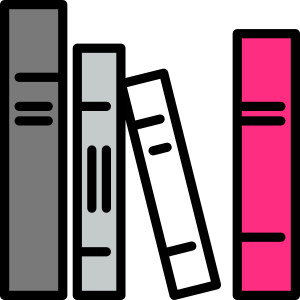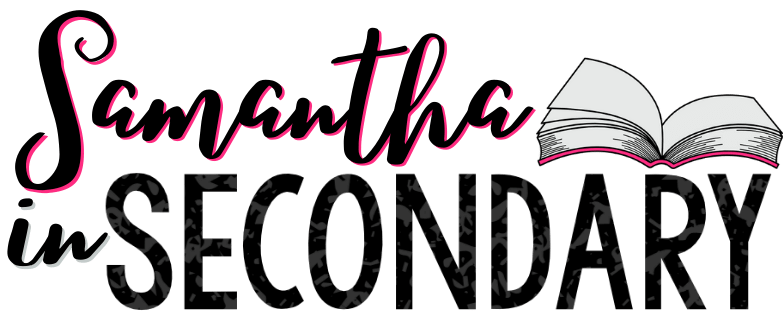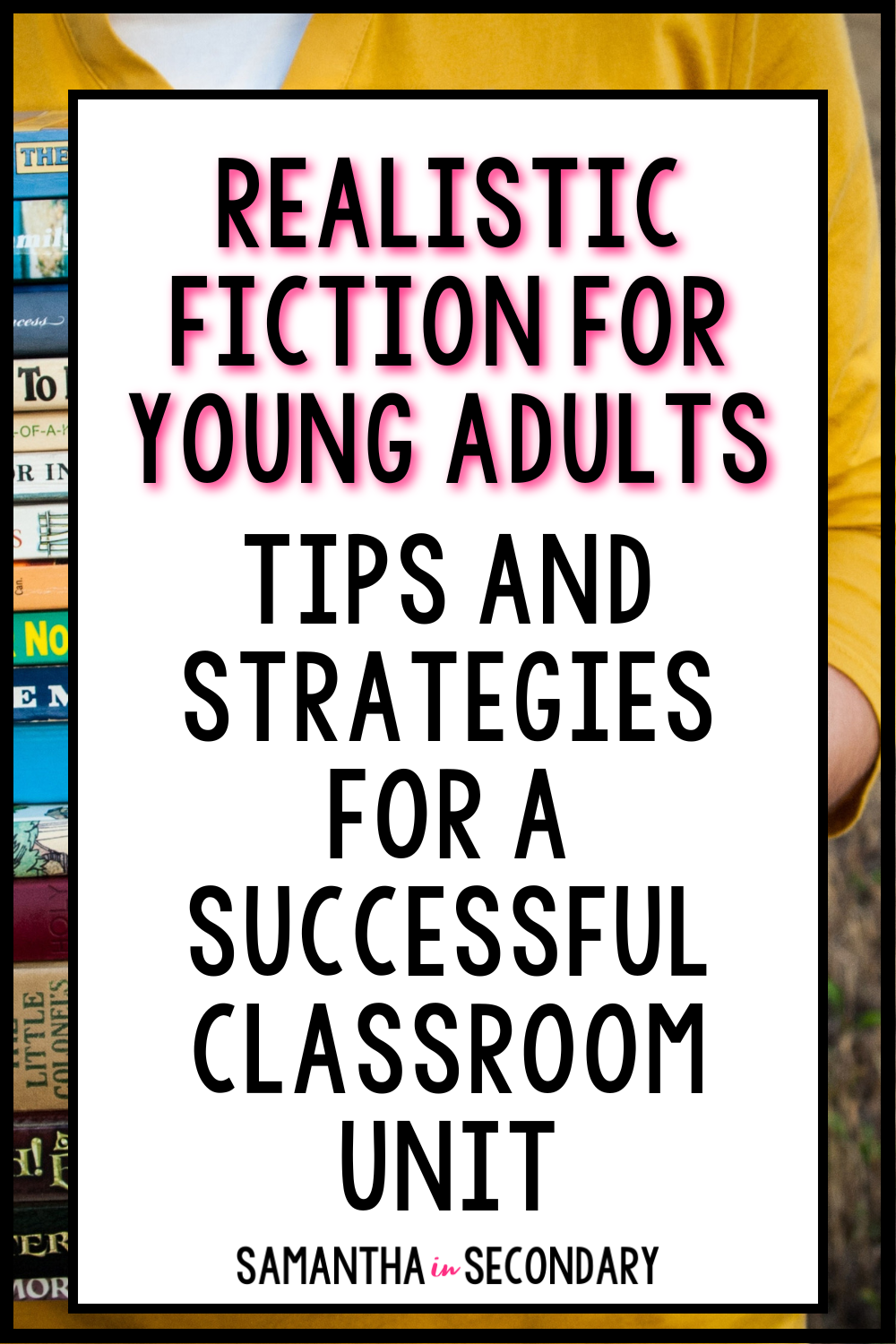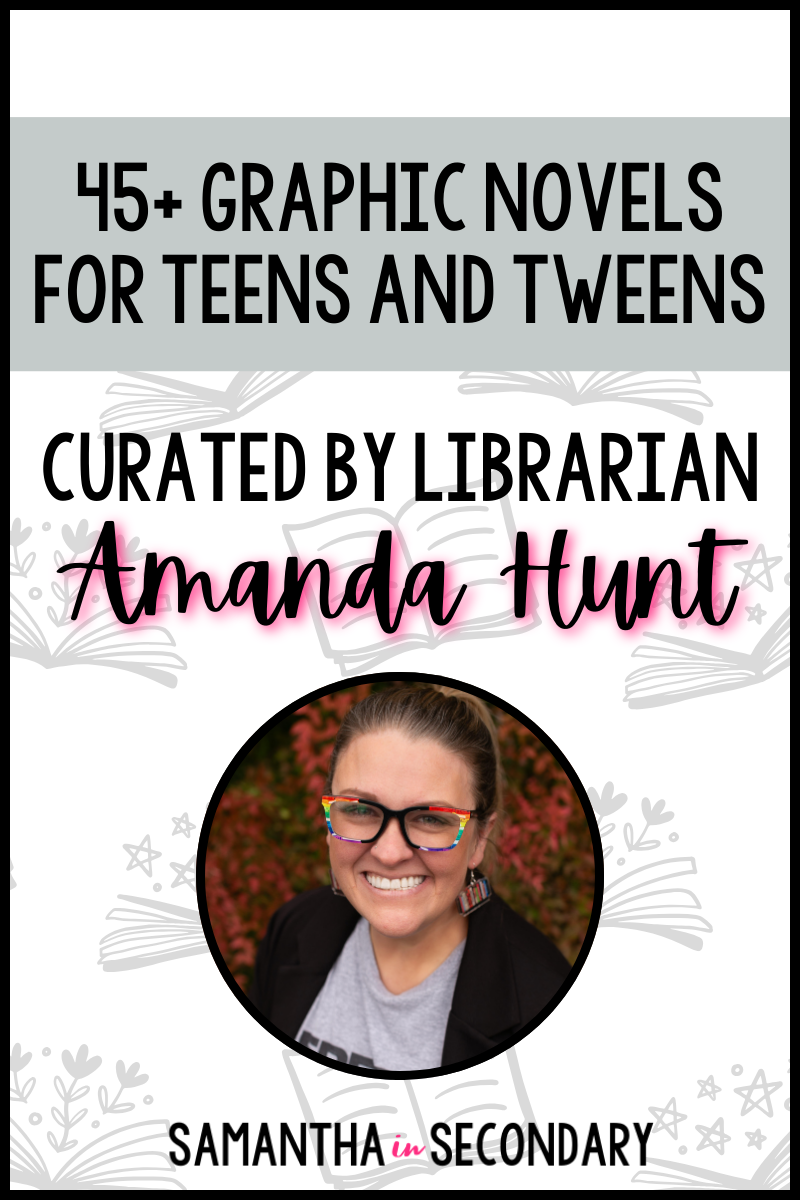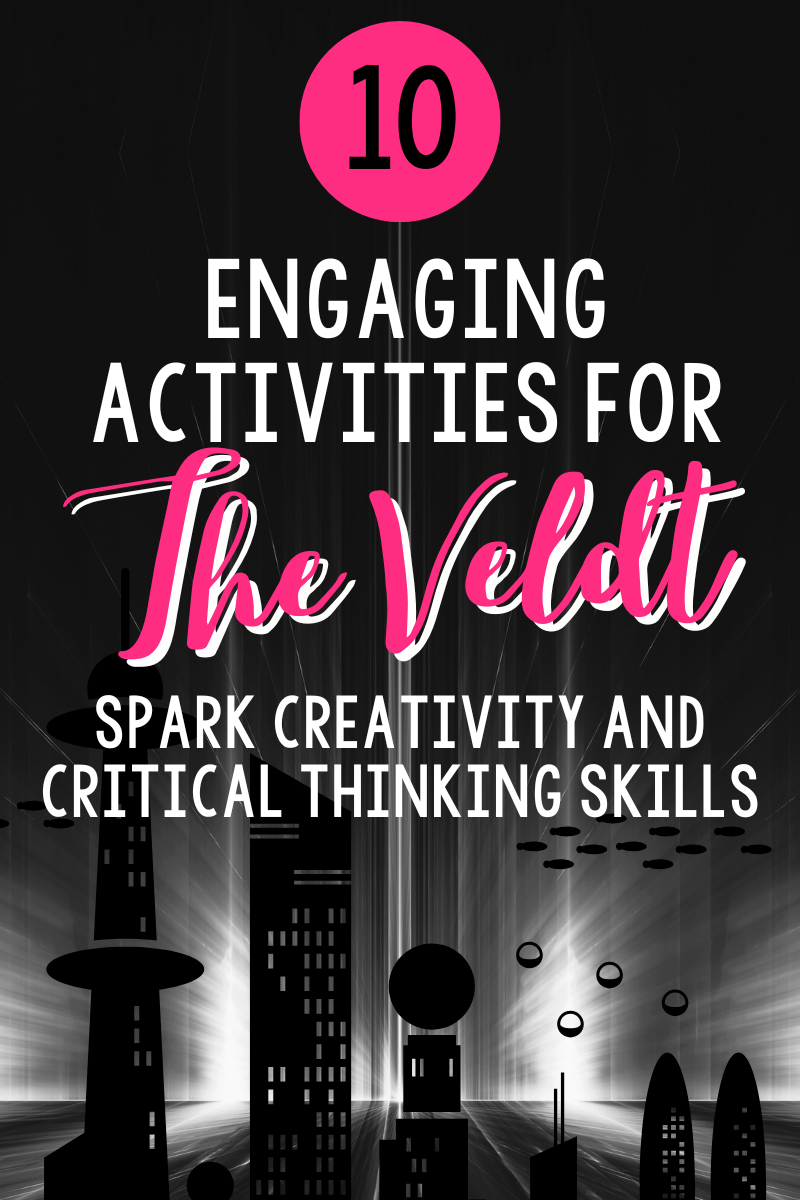Narrative writing feels like it should be easy. I mean, isn’t it “just writing”? We do an awful lot of it in secondary ELA. The trouble is, we take for granted that our students know how to take the “what” of a good story and recreate it for themselves. If you need to transform your narrative writing unit, look no further. Read on for suggestions and goodies that will help you help your students navigate narratives.
What is Narrative Writing?
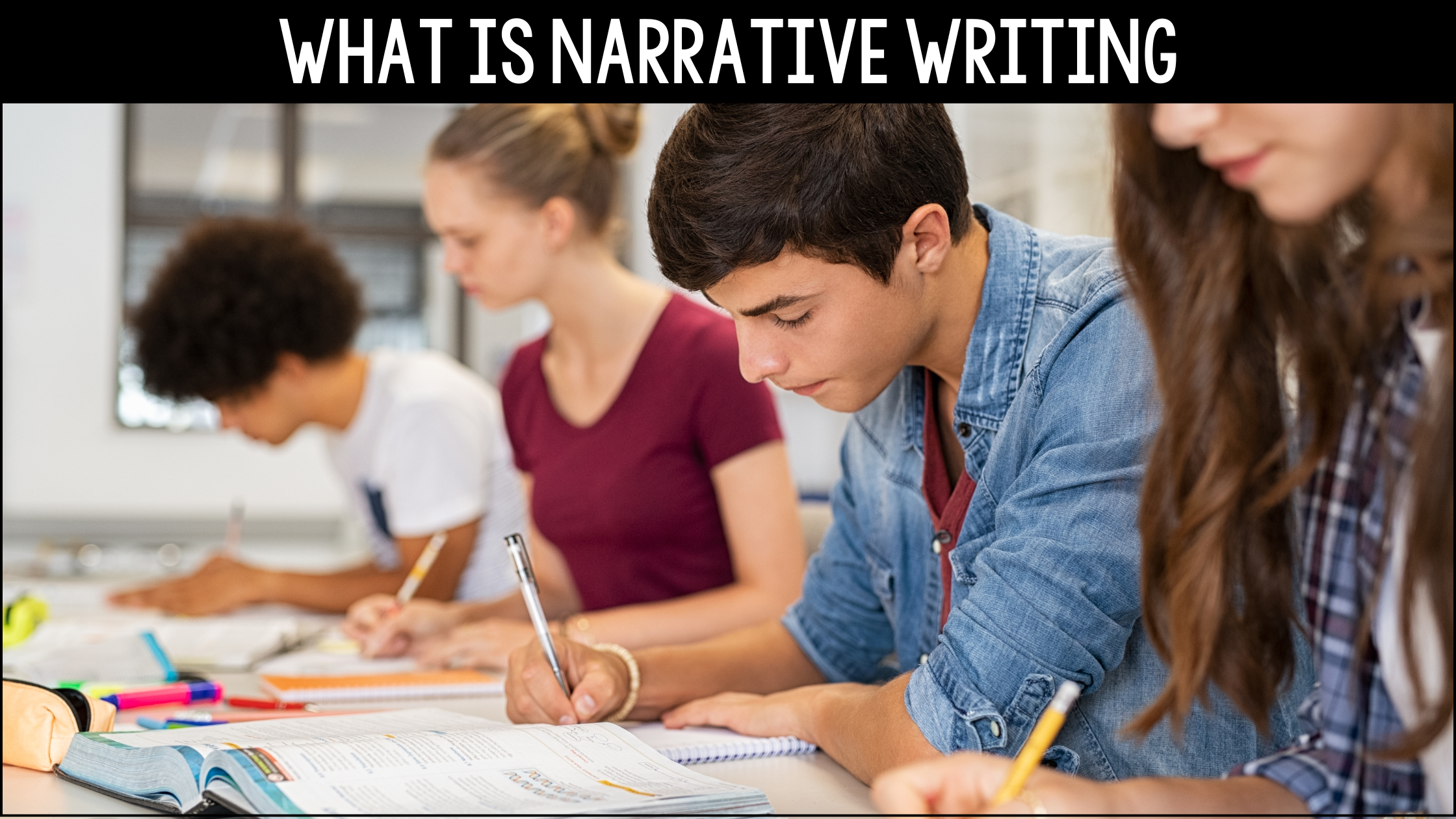
Simply put, narrative writing is story-telling. There are different genres and creative liberties that can be applied to the story, but at its core, it’s another form of writing. We encounter narrative every day of our lives, even if we aren’t specifically utilizing the writing aspect.
Why is Narrative Writing Important for Secondary Students?
With such a broad definition, it is easy to say that narrative writing is a skill that students can pick up as they go. That’s a huge disservice to our students. Yes, there are a lot of assignments in our secondary ELA classrooms that fit the scope of narrative writing, but that doesn’t mean our students are all picking up on the essential skill of writing.
Narrative writing should teach the important elements of story-telling. Do your students know how to develop plot structure or character development? Are they effective at using descriptive language? We narrate every day of our lives – even if we aren’t writing it all down. Narrative writing is a skill set that can only improve our communication skills as a whole.
Getting Started with Your Narrative Writing Unit

So now you’re ready to develop a narrative writing unit – where to begin? I first like to start with discussing what makes a good story. Students have their opinions and tastes, but we can all identify a “good story”. I also like to utilize this TED Talk with Andrew Stanton “Clues to a Great Story”. Once we can identify elements of a good story, we can move on to more in-depth discussions on each piece, as well as have students start applying what they learn to their own writing. (Make sure you start this video at 1:20 or use an edited version from YouTube like this one. The beginning includes an off-color joke that isn’t appropriate for students, but the rest of the video is incredible.)
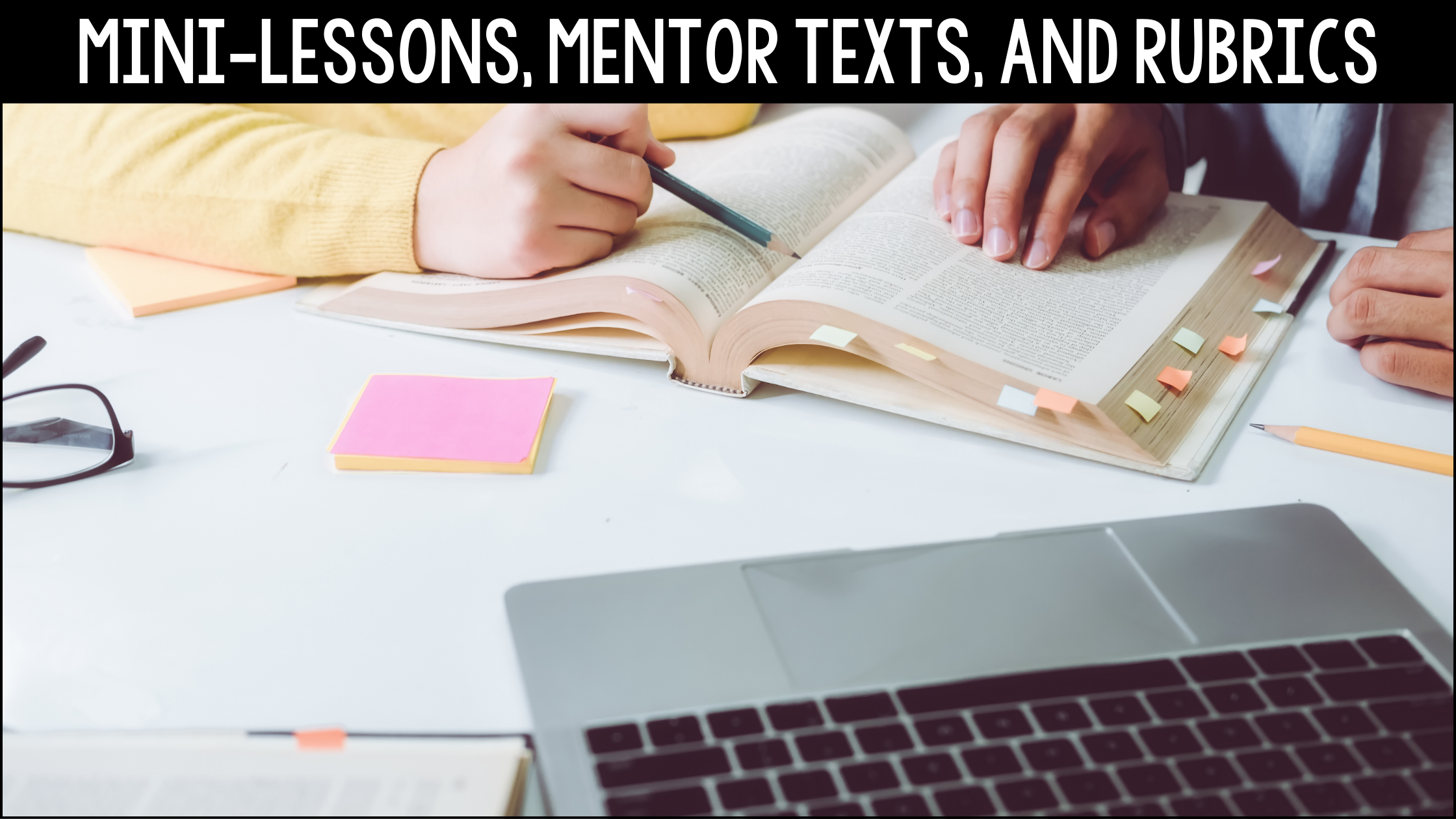
Chunk the Unit with Targeted Mini-Lessons
Next, take a look at each piece of a good story. Identify what makes a strong plot or a compelling character. You then can use setting maps and plot diagrams for students to build their own writing. I like to specifically teach in this order: character, setting, plot, conflict, and narrative hooks. In addition, I may throw in some specific lessons on pacing, dialogue and theme.
Since I chunk the unit with targeted mini-lessons, students learn the content and practice with reading and writing exercises that will help them get familiar with the literary element. Mini-lessons provide flexibility and engagement that students seem to enjoy, and you can offer a variety of texts and activities with this method. My full literary element bundle can be found here. It’s full of guides and activities as you work your way through the literary elements.
Study Mentor Texts
It’s so important that we use mentor texts with our students whenever we are discussing writing. There should always be examples that they can use as a way to visualize and solidify what we hope they apply to their own writing.
It doesn’t have to be in-depth, but you should have on hand a collection of passages that can be studied. These might be popular novels your students have likely read on their own, or something you have recently read in class. You can also find snippets that get the point across without having to commit to reading entire works. You can also write your own creative passages. Whatever you choose, be sure that these are engaging passages. Find references to pop culture, lean into your class culture and inside jokes, or find things that are just plain silly.
Self-Grade and Reflect with a Rubric
Another important element in developing a narrative writing unit is having students self-grade. This isn’t to say you don’t have input as the teacher. However, when it comes to having a rubric I find students often write “for” the teacher. If we truly care about students developing their writing for personal development, then they should take ownership of that development.
When it comes time for students to write their own narrative writing piece, have them think about their own goal. Perhaps they want to focus on character development. Maybe they need to work on descriptive writing. As a class, you can discuss what a writing goal entails and give each student time to think about what they would like to work on. Teacher-student meetings are a great way to give your own input or discuss what you will be looking for in the assignment, without taking away the independence of the students. I especially feel this is important as students will not always be sitting around with a rubric given by the teacher. But they will have endless opportunities to self-reflect their writing in whatever capacity that entails in their futures.
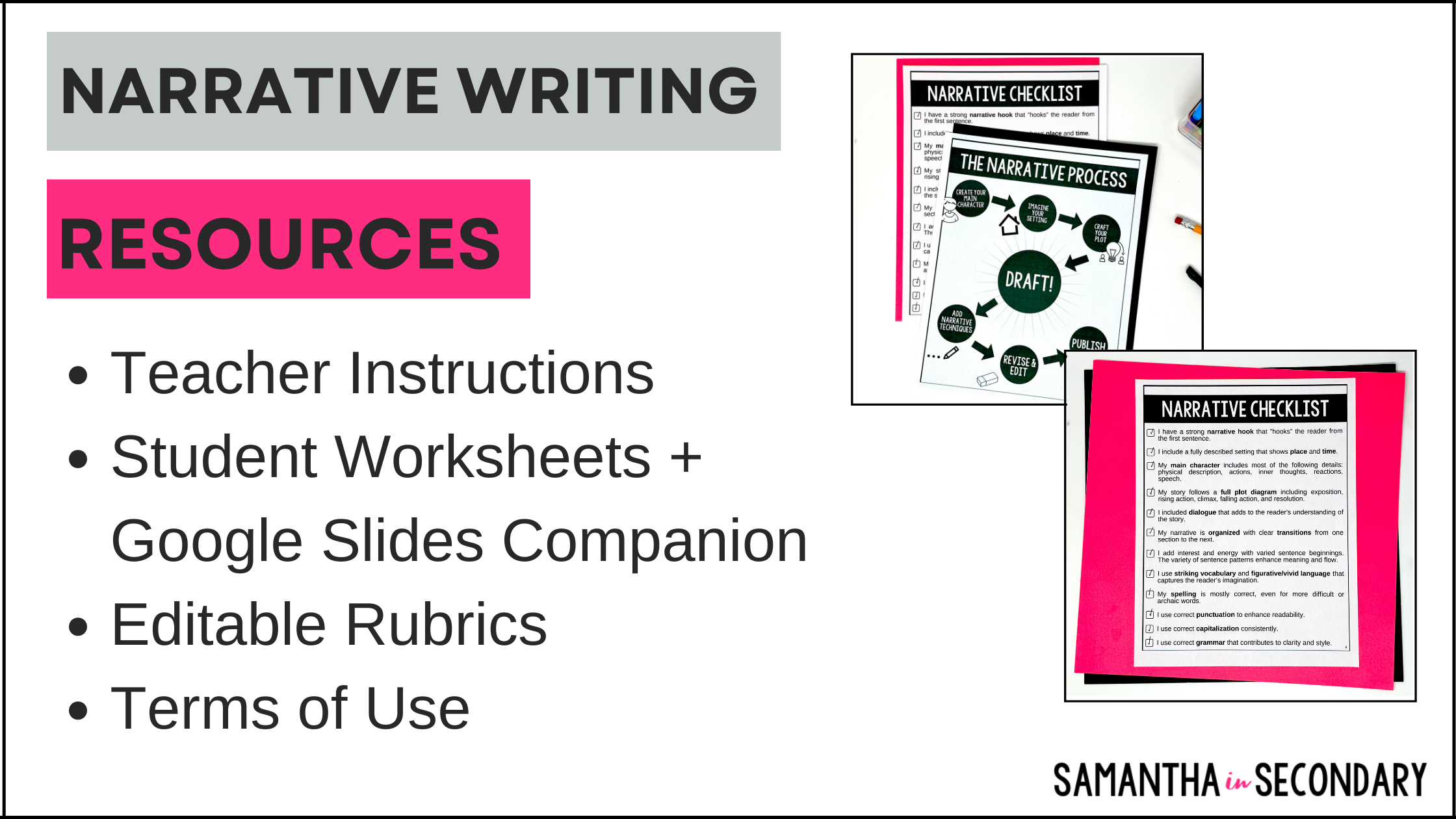
To summarize, our students should absolutely leave our classrooms as better writers. But just because our students write a lot, doesn’t mean they are grasping the concepts or making improvements. Let’s change the narrative of narrative writing and make sure our students continually make progress.
If you’re looking to enhance your narrative writing unit with a full, immersive experience and everything you need to level up your instruction, use this Narrative Writing Unit MEGA-BUNDLE that includes 9 narrative writing resources. It also includes a full unit plan, literary element mini-lessons, daily writing prompts, practice activities, graphic organizers, and more for an enhanced narrative experience.
Happy teaching!

